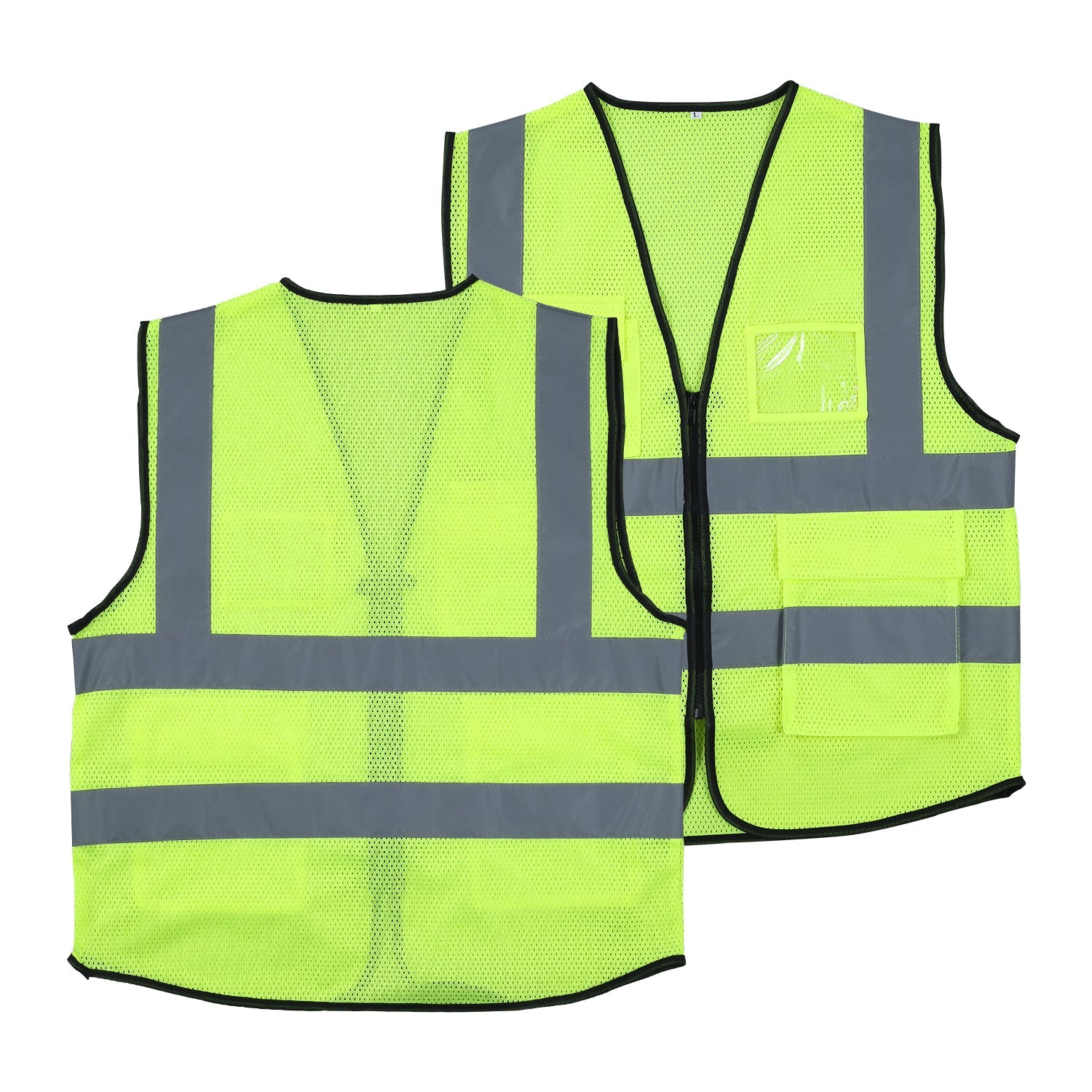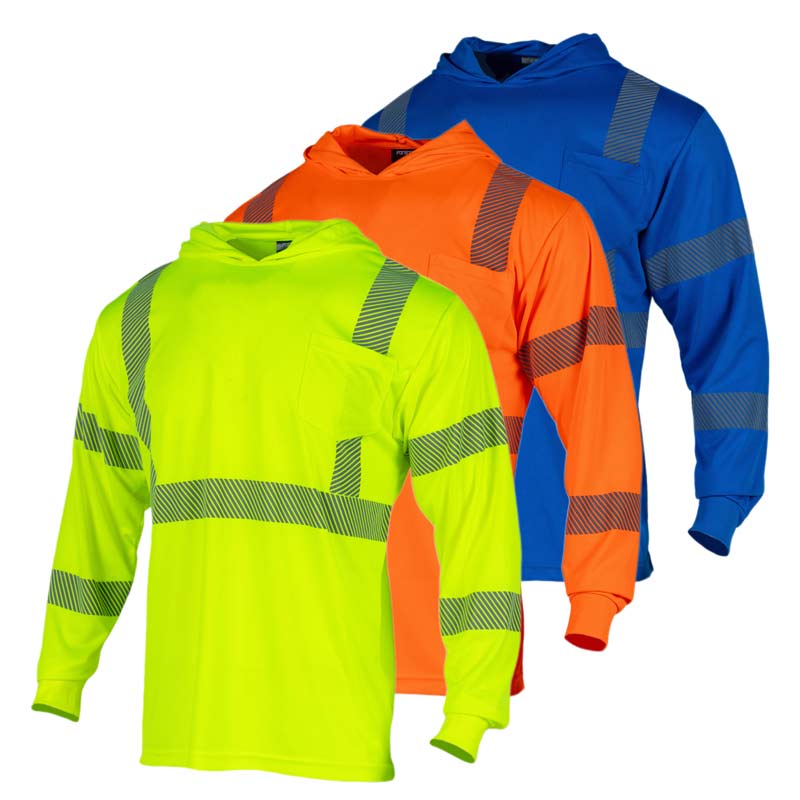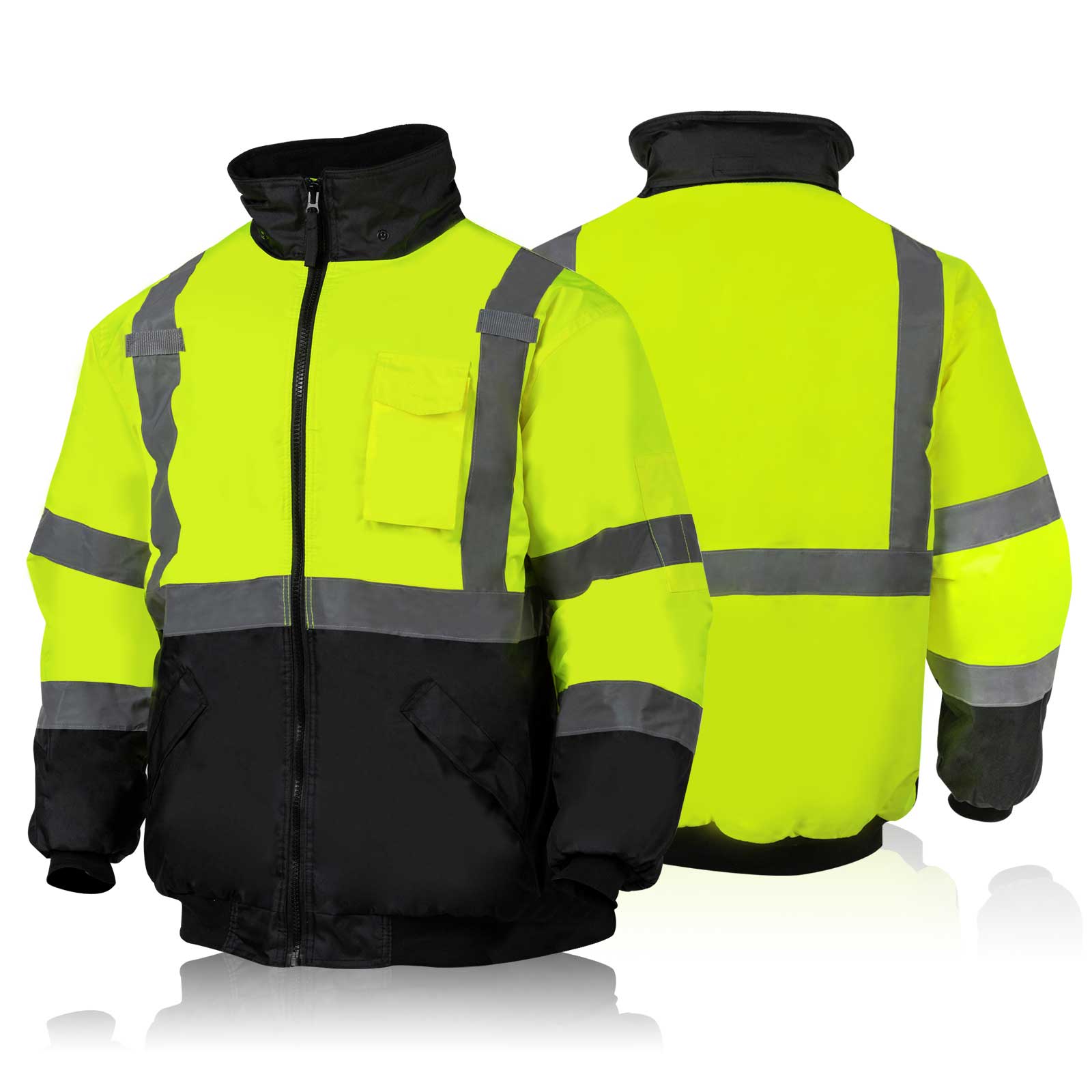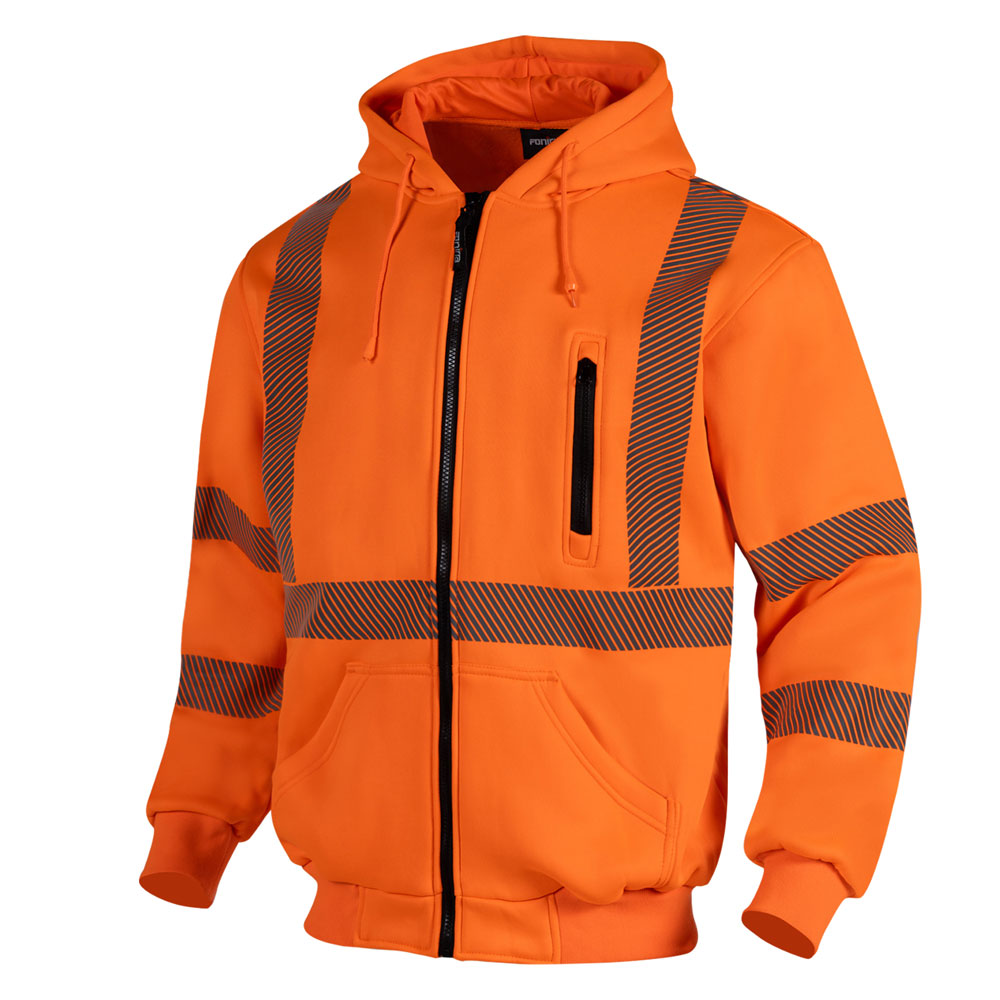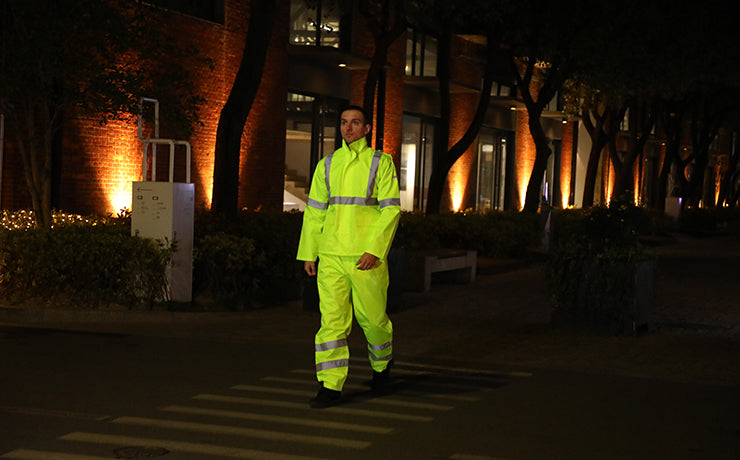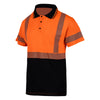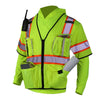From Frosty Mornings to Snowy Afternoons: A Veteran's Guide to staying warm working outside in winter
When winter wraps the world in its chilly embrace, working outdoors can transform into a battle against the elements. From frosty mornings to snowy afternoons, staying warm becomes crucial.
Ever wonder how those seasoned workers manage to face extremely cold temperatures and still emerge triumphant?
The secret lies in mastering the strategies for keeping warm, and today we unfold the layers (literally) of this wisdom.
The Art of Layering: A Pro's Perspective
Layering is essential for temperature regulation as it helps to trap and conserve body heat, ensuring that you stay warm in cold weather.
By donning at least three layers, you can adapt to varying weather conditions and activities, ensuring your body temperature stays steady even in the face of frigid temperatures.
Does keeping your head warm keep your body warm?
A significant amount of body heat is lost through the head, especially in extremely cold temperatures. Keeping your head covered is crucial for keeping warm and maintaining your overall body temperature.
Hats and hoods act as an insulating layer, trapping heat that would otherwise escape, ensuring you stay warm while working outdoors.
Top Clothing Recommendations
Choosing the right materials for your clothing layers is vital. Wool and synthetic fibres are preferred as they provide insulation and wick away moisture, preventing wet clothing from drawing out your body heat.
For effective layering, start with a moisture-wicking base layer to keep your skin dry. Add an insulating mid layer to produce heat and an outer protective layer to shield against wind and snow. This combination is essential for keeping warm in cold temperatures.
Protecting Hands and Feet: Strategies for Staying Toasty
1. Keeping Hands Warm
Gloves made from materials that insulate while allowing breathability are essential for keeping hands warm in extreme cold.
ayering gloves can enhance warmth, while also ensuring that circulation is maintained. Regularly clenching and unclenching your fists can help keep the blood flowing.
2. Ensuring Warm Feet
For your feet, wearing thick socks made of wool can prevent the cold from seeping in. Layering socks, combined with insulated and waterproof winter boots, can be very effective.
Some workers swear by heated insoles or foot warmers, akin to a hot water bottle for your shoes.
Steel toe boots can be especially cold, so ensuring they're well-insulated is crucial for those who work outdoors in cold temperatures.
Combatting Sweating and Moisture

Moisture management is vital to staying warm while working in cold weather. Sweating under multiple layers can lead to wet clothing, which draws away body heat, making you feel colder.
Proper moisture management ensures that your outer layers stay dry, trapping air between the layers and keeping you warm inside.
Tips for Moisture Management:
-
Choose Breathable Fabrics: Your base and outer layers should allow perspiration to evaporate easily, preventing dampness.
-
Avoid Cotton Socks: Unlike cotton socks, synthetic or woollen socks wick moisture away, keeping your feet dry and warm.
-
Carry a Spare Pair: Having a spare pair of gloves or socks can be a lifesaver. If you start to sweat, change into the dry pair to ensure you stay warm.
Regular Breaks and Quick Warm-ups
Taking regular breaks is crucial to recharge and protect yourself from extreme cold. These pauses are necessary for maintaining body temperature and ensuring that you do not succumb to the cold.
Best Practices for Breaks
-
Finding Shelter: Use breaks to find shelter from the wind or precipitation. Even a brief respite can keep your face warm and energy levels up.
-
Hot Drinks: A hot drink, like tea or a hot beverage of your choice, can pre-warm your body, providing an internal source of heat.
-
Quick Exercises: Engage in light exercises such as jumping jacks or jogging in place. These activities can elevate your body temperature and keep you warm.
Fueling the Body: Foods and Drinks for Winter Workdays

High-energy, easy-to-digest foods are essential for sustaining energy levels while working outdoors. Foods rich in fats and proteins can provide sustained energy. Warm food, such as soups or stews, can also help to keep you warm inside.
Hydrating with a hot beverage is essential. Teas, hot chocolate, or even warm water can serve to keep your body temperature regulated.
Exercises and Stretches to Maintain Circulation
Working outdoors in cold weather requires more than just layering up; it's essential to keep your blood circulating efficiently to maintain body warmth and flexibility. Engaging in exercises and stretches ensures that your muscles produce heat and stay limber even in cold temperatures.
Recommendations on Specific Exercises
-
Jumping Jacks: This classic exercise gets your heart rate up quickly, increasing blood flow and warming up the body.
-
Dynamic Stretching: Movements such as arm circles, leg swings, and lunges help maintain flexibility and warmth.
-
On-the-Spot Jogging: Jogging in place can be a quick and effective way to elevate your heart rate and generate heat.
Maintaining flexibility is crucial as stiff muscles are more prone to injury. Regularly engaging in exercises during breaks ensures that your body remains warm and agile throughout the day.
Protecting the Face and Extremities
In freezing temperatures, the face and extremities, such as fingers, ears, and nose, are often the most susceptible to the cold. Protecting these parts is vital for overall comfort and safety while working outdoors.
Recommendations on Protective Gear
-
Face Masks and Balaclavas: These can provide essential cover, shielding your face from the biting wind and keeping your face warm.
-
Goggles: Goggles are not just for snowboarders; they can protect your eyes from harsh weather conditions while ensuring clear visibility.
-
Ear Muffs or Headbands: These can keep your ears warm without compromising your hearing ability.
Tips on Protecting Fingers, Nose, and Ears
-
Layered Gloves: Wearing an inner glove layer can add an extra layer of protection for your fingers.
-
Frequent Movement: Regularly wiggle your fingers and toes and adjust your facial coverings to maintain blood circulation.
-
Nose Guards: For extremely cold conditions, a nose guard can be an added shield against frostbite.
Conclusion
Staying warm and productive during winter workdays is achievable through strategic layering, timely breaks, and prioritizing extremity protection.
Fonirra's ANSI Class 3 Fleece Thermal Windproof Safety Hi Vis Reflective Jacket is a top choice for seasoned workers, with its waterproof and windproof design, ensuring you're well-equipped to face the cold.
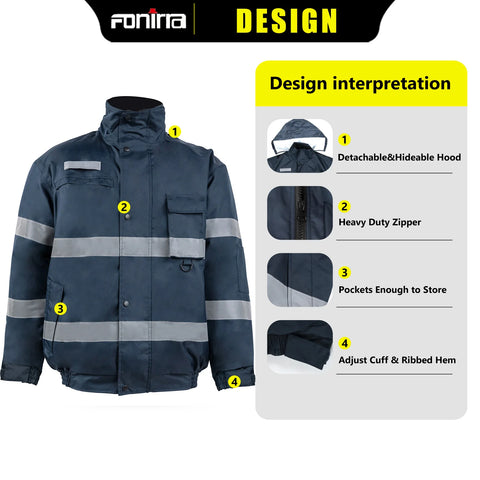
This jacket, along with tried-and-true techniques, guarantees comfort and warmth, making winter workdays not just bearable but productive.
-
Posted in
winter

